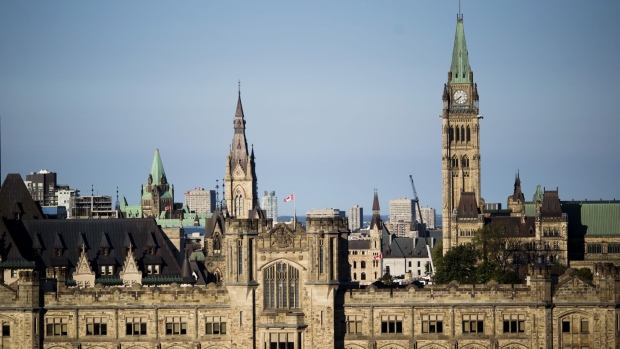Is this a crisis like none other?
This is at least the third pronounced economic challenge that our country has faced in the past three years. The spring and summer of 2019 were marked by sharp uncertainty about our economic future and about whether Pakistan would turn yet again to the IMF. In July 2019, when the IMF finally announced a $6 billion programme — of which we are scheduled to receive the seventh and eighth tranche this August — it noted that Pakistan’s economy was “at a critical juncture” and was “facing significant economic challenges on the back of large fiscal and financial needs and weak and unbalanced growth”. A combination of measures that were undertaken then soon restored stability. The rupee strengthened four per cent between end-July 2019 and end-February 2020 — just before the start of Covid-19 — to Rs154 to the dollar and gross reserves rose by about $5 billion over the same period.
Read: Better crisis management
Just when economic stability was restored after the 2019 balance-of-payments crisis, we were struck by a second crisis in March 2020 that appeared truly unprecedented at the time. The IMF managing director Kristalina Georgieva declared about the Covid-19 crisis that “a global crisis like no other needs a global response like no other”. Indeed, the world had not seen such a confluence, and at such a scale, of both public health and economic challenges. Pakistan responded to this crisis with innovative and timely measures that saved lives and livelihoods and engendered a quick economic recovery. For a country that was historically prone to economic mismanagement, our response to Covid-19 was noted internationally for its targeted cash transfer scheme under Ehsaas to protect the poor and for the government and central bank’s proactive economic measures. Moreover, unlike most countries where public debt rose significantly during Covid-19, we were able to reduce our public debt-to-GDP ratio by about five percentage points through Covid-19.
The perceived absence of political clarity is casting a shadow over most economic decisions.
Given that we successfully restored stability and growth in the recent two challenging crises, why is there not a shared sense of calm confidence that we should be able to do the same this time round? This question is particularly relevant because our reserves and public debt are better today than they were in the 2019 balance-of-payments crisis before the start of the IMF programme. At end-June 2019, our gross reserves had dipped to around $7bn; at end-June 2022 they were around $10bn. The State Bank’s forward liabilities, including swaps, which are a measure of possible short-term net drains on reserves, were about $8bn back then; today they are about $4bn. In effect, our quality of reserve buffers is about $7bn better than it was then. Our average monthly current account deficit in the first half of 2019 was approximately in the same range as it is today, notwithstanding that oil prices are about $40 higher today. Moreover, our public debt is estimated at 75pc of GDP at June 2022 compared to around 80pc two years earlier. The KSE-100 index of the stock market, more a function of sentiment and other factors than fundamentals, sank to around 27,000 in 2019 and again during Covid; today, it is around 40,000.
Yet despite these better indicators, the perception is that this crisis is like none other. There are three primary reasons why, despite having successfully navigated two significant crises in the past two years and our fundamentals being better, this economic challenge appears worse.
First, is the current political tension and its associated implications for uncertainty around future economic policymaking. Back in 2019 and again during the Covid-19 crisis, there was little ambiguity regarding the near-term future of the political set-up. Today, the perceived absence of political clarity is casting a shadow over most economic decisions. Further, each new political development opens up more permutations around the future course of decision-making.
Second, global interest rates are much higher today than they were either in 2019 or during Covid-19. This is significant because it directly impacts the viability of us borrowing commercially to meet our external financing needs. Ten-year US interest rates were around 2pc in the mid-2019 which fell to 0.5pc during the Covid-19 crisis. Today, they are around 3pc. Moreover, the premium over the US interest rate for borrowing by emerging markets has risen sharply.
And finally, today, unlike in the last two recent crises, there are significant spillovers from other high-debt countries experiencing debt distress such as Sri Lanka. Even if Pakistan’s fundamentals may be better on some counts, having the misfortune of being considered similar in perceptions of economic management is enough to cause concern. Further, it does not help that Pakistan gets included in lists drawn up by prominent international outlets of countries under the risk of debt distress. And the recent downgrades of our economic outlook by all three credit ratings agencies — despite the recently announced IMF staff-level agreement — gives further inclination to analysts to lump us with debt distress cases.
Where does this lead us in terms of the outlook? The bad news is that of the three factors above only the first — domestic political stability — is in our control or at least in the control of some stakeholders in our country. The other two factors — global interest rates and spillovers from other countries that will continue to fall into debt distress — will likely persist in the coming months. In any event, their evolution is not in our control.
The good news is that the first factor may be the most important that can restore stability. If key economic stakeholders come to conclude that a particular political constellation — whichever constellation that may be — is going to remain stable for the foreseeable future, they may be more inclined to reach the more plausible conclusion that the perception of our current economic problems is worse than the reality.
The writer is former governor of the State Bank of Pakistan.
Twitter: @rezabaqir
Published in Dawn, July 31st, 2022





